#Godavari Basin Irrigation Projects
Explore tagged Tumblr posts
Text
Key Highlights of Telangana Irrigation Projects 2024-25
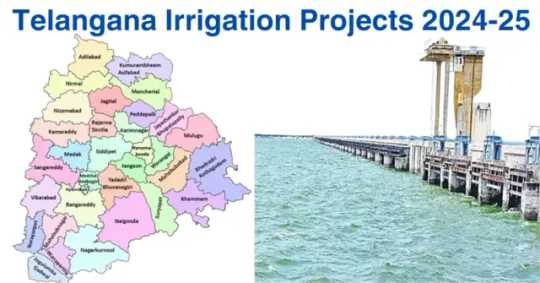
Introduction:
The Telangana government has unveiled an ambitious Rs 10,820 crore plan for the fiscal year 2024-25, focusing on various irrigation projects across the Godavari and Krishna basins. This comprehensive plan, announced by Irrigation and Civil Supplies Minister N. Uttam Kumar Reddy, aims to create new irrigation potential and stabilize existing infrastructure, thereby enhancing agricultural productivity in the state. Telangana Irrigation Projects With significant capital investment allocated in the financial budget, the government is poised to address both immediate and long-term irrigation needs, ensuring sustainable water management and support for the farming community.
The Telangana government has outlined an ambitious Rs 10,820 crore plan for various irrigation projects in the fiscal year 2024-25, aiming to boost agricultural productivity by creating new irrigation potential and stabilizing existing infrastructure.
Comprehensive Plan for Irrigation:
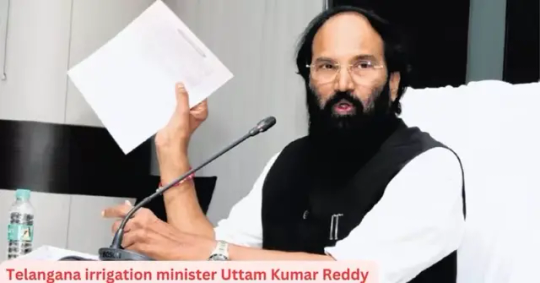
On Sunday, July 28, Irrigation and Civil Supplies Minister N. Uttam Kumar Reddy announced the state’s detailed expenditure plan focused on irrigation projects across the Godavari and Krishna basins. During a review meeting with advisors, secretaries, and senior officials, Reddy emphasized the critical role of the irrigation sector in the state’s development.
Focus on the Irrigation Sector:
Uttam Kumar Reddy highlighted that the irrigation sector has received significant attention in the financial budget, with a capital investment of Rs 10,820 crores. He also addressed potential flooding issues during the rainy season, stressing the importance of precautions for reservoirs and tanks.
The government aims to create an additional 30 lakh acres of ayacut in Telangana over the next five years, marking a new era in the state’s irrigation sector. This initiative is set to benefit farmers and the public substantially.
Ensuring Adequate Funding:
Reddy reviewed the progress of priority projects and measures to expedite work. He assured that there would be no shortage of funds for these projects, with adequate allocation for the irrigation department. He stressed the importance of completing field-level work on time and adhering to targets, warning that negligence would not be tolerated.
Godavari Basin Projects:
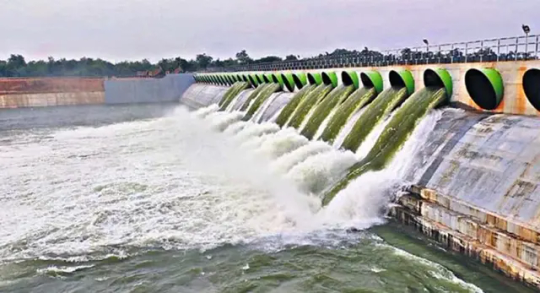
Project Name
Fund Allocation (Rs Crores)
New Ayacut (Acres)
Stabilized Ayacut (Acres)
Chinna Kaleshwaram Lift Irrigation Scheme (LIS)
183.96
12,267
–
Modikunta Vagu Project
163.08
–
–
Lower Penganga (including Chanka Korata LIS)
147.23
27,794
–
Sripada Yellampally LIS
545.95
41,000
–
JCR DLIS Project
512.18
132,012
–
Sita Rama LIS
1,487.31
118,933
111,818
Total
3,039.71
332,006
111,818
Note: The “Stabilized Ayacut” refers to the areas where existing irrigation infrastructure is enhanced and stabilized.
Krishna Basin Projects:
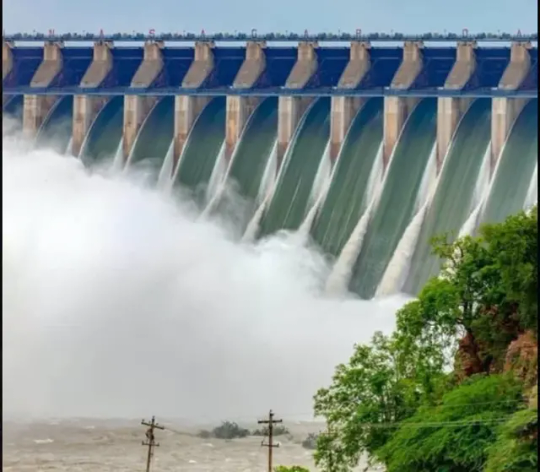
Project Name
Fund Allocation (Rs Crores)
New Ayacut (Acres)
Koil Sagar LIS
121.56
3,078
RBLIS Project
127.34
21,692
JNLI Project
67.88
35,000
Kalwakurthy LIS Project
489.16
134,994
Dindi LIS
1,881.1
8,000
Total
2,687.04
202,764
Kaleshwaram and Associated Projects:
Project Name
Fund Allocation (Rs Crores)
New Ayacut (Acres)
Kaleshwaram Project (12 projects)
7,406.43
5,85,000
Narayanpet-Kodangal Lift Irrigation Scheme
1,000
–
Palamuru Rangareddy Lift Irrigation Project
6,130.53
– (expected after March 31, 2026)
Total
14,536.96
5,85,000
Note: The Narayanpet-Kodangal and Palamuru Rangareddy projects are focused on land acquisition and related works, with the latter’s ayacut expected to be realized after March 31, 2026.
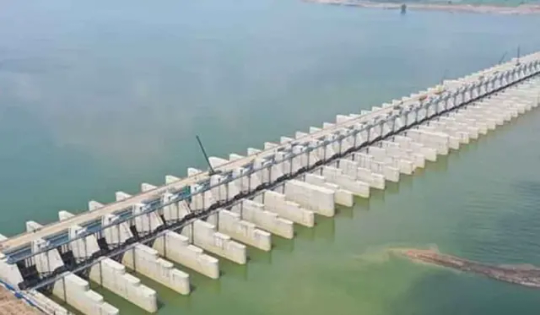
Conclusion:
The Telangana government’s Rs 10,820 crore plan for irrigation projects in 2024-25 marks a significant step towards bolstering the state’s agricultural infrastructure. The plan aims to provide substantial benefits to farmers and the public by creating new irrigation potential and stabilizing existing systems. Despite criticism from previous administrations, the current government’s commitment to transparency, timely project completion, and responsible resource management highlights its dedication to fostering sustainable agricultural growth. This comprehensive approach is expected to usher in Telangana’s farming sector’s new era of prosperity, ensuring long-term food security and economic stability.
#Godavari Basin Irrigation Projects#Krishna Basin Irrigation Developments#Telangana 2024-25 Irrigation Plan#Telangana Irrigation Projects#Telangana Crop Productivity Improvement
0 notes
Text
Pattiseema Lift Irrigation Project in Andhra Pradesh
The Pattiseema Lift Irrigation Project (PLIP) is one of the most ambitious and transformative irrigation initiatives undertaken in Andhra Pradesh, showcasing the vision and leadership of the Telugu Desam Party (TDP) under the guidance of its leader, N. Chandrababu Naidu. Located on the Godavari River, near Pattiseema in the West Godavari district, this project has been pivotal in addressing the water needs of the drought-prone regions of the state, particularly the Krishna Delta. The TDP, under the dynamic leadership of N. Chandrababu Naidu, conceptualized the Pattiseema Lift Irrigation Project as a game-changer for the state’s irrigation and agriculture. Recognizing the recurrent drought issues and the need for an efficient water management system, Naidu aimed to interlink the Godavari and Krishna rivers, effectively diverting surplus waters from the Godavari to the Krishna basin. N. Chandrababu Naidu’s proactive approach and commitment to completing the project in record time testify to his focus on infrastructure development and sustainable water management.
The Pattiseema project was completed in less than a year, making it one of the fastest-executed irrigation projects in India. This remarkable achievement was possible due to Naidu’s administrative acumen, strong political will, and the collective effort of TDP MLAs and other stakeholders. TDP MLAs played a significant role in supporting and promoting the Pattiseema Lift Irrigation Project. Their active involvement in the planning, coordination with local communities, and relentless advocacy for the project ensured its timely completion. The TDP legislators frequently visited the construction sites, monitored the progress, and provided essential feedback, ensuring the project stayed on track despite numerous challenges. The support of TDP MLAs was crucial in overcoming the political and logistical hurdles often accompanying large-scale infrastructure projects. Their dedication and alignment with N. Chandrababu Naidu’s vision exemplified the collective spirit of the TDP in striving towards the welfare of Andhra Pradesh. The successful execution of the Pattiseema Lift Irrigation Project has had far-reaching positive impacts on the state. The project's primary objective was to divert 80 TMC of water from the Godavari River to the Krishna River. This has significantly reduced the dependency on the Srisailam and Nagarjuna Sagar reservoirs, especially during the critical summer months when water scarcity is at its peak. By facilitating year-round water availability in the Krishna delta, the project has revitalized agriculture, improved groundwater levels, and ensured reliable water supply for domestic and industrial use.
The project also plays a crucial role in flood mitigation by regulating excess water flow from the Godavari, thereby safeguarding the lower riparian regions from flood threats. The Pattiseema Lift Irrigation Project stands as a landmark achievement in Andhra Pradesh’s irrigation history, symbolizing the strategic foresight of N. Chandrababu Naidu and the unwavering support of TDP MLAs. It reflects a blend of innovative engineering, political will, and community involvement, addressing long-standing water challenges and setting a benchmark for other states to emulate. This project not only showcases the TDP’s commitment to enhancing the agricultural landscape of Andhra Pradesh but also reinforces N. Chandrababu Naidu’s legacy as a leader focused on long-term, sustainable development. To know more about this scheme, follow the TDP Live Update website.
0 notes
Text
Key Highlights of Telangana Irrigation Projects 2024-25
Introduction:
The Telangana government has unveiled an ambitious Rs 10,820 crore plan for the fiscal year 2024-25, focusing on various irrigation projects across the Godavari and Krishna basins. This comprehensive plan, announced by Irrigation and Civil Supplies Minister N. Uttam Kumar Reddy, aims to create new irrigation potential and stabilize existing infrastructure, thereby enhancing agricultural productivity in the state. Telangana Irrigation Projects With significant capital investment allocated in the financial budget, the government is poised to address both immediate and long-term irrigation needs, ensuring sustainable water management and support for the farming community.
The Telangana government has outlined an ambitious Rs 10,820 crore plan for various irrigation projects in the fiscal year 2024-25, aiming to boost agricultural productivity by creating new irrigation potential and stabilizing existing infrastructure.
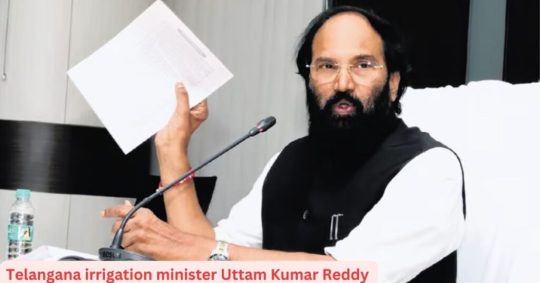
Comprehensive Plan for Irrigation:
On Sunday, July 28, Irrigation and Civil Supplies Minister N. Uttam Kumar Reddy announced the state's detailed expenditure plan focused on irrigation projects across the Godavari and Krishna basins. During a review meeting with advisors, secretaries, and senior officials, Reddy emphasized the critical role of the irrigation sector in the state's development.
Focus on the Irrigation Sector:
Uttam Kumar Reddy highlighted that the irrigation sector has received significant attention in the financial budget, with a capital investment of Rs 10,820 crores. He also addressed potential flooding issues during the rainy season, stressing the importance of precautions for reservoirs and tanks.
The government aims to create an additional 30 lakh acres of ayacut in Telangana over the next five years, marking a new era in the state's irrigation sector. This initiative is set to benefit farmers and the public substantially.
Also Read: Union Budget 2024-25 Telangana: Key Allocations & Strategic Investments for Telangana’s Future
Ensuring Adequate Funding:
Reddy reviewed the progress of priority projects and measures to expedite work. He assured that there would be no shortage of funds for these projects, with adequate allocation for the irrigation department. He stressed the importance of completing field-level work on time and adhering to targets, warning that negligence would not be tolerated.
Godavari Basin Projects:
Project Name
Fund Allocation (Rs Crores)
New Ayacut (Acres)
Stabilized Ayacut (Acres)
Chinna Kaleshwaram Lift Irrigation Scheme (LIS)
183.96
12,267
-
Modikunta Vagu Project
163.08
-
-
Lower Penganga (including Chanka Korata LIS)
147.23
27,794
-
Sripada Yellampally LIS
545.95
41,000
-
JCR DLIS Project
512.18
132,012
-
Sita Rama LIS
1,487.31
118,933
111,818
Total
3,039.71
332,006
111,818
Note: The "Stabilized Ayacut" refers to the areas where existing irrigation infrastructure is enhanced and stabilized.

Also Read: Top 10 Mega Projects In Telangana 2024: A Detailed Overview
Krishna Basin Projects:
Project Name
Fund Allocation (Rs Crores)
New Ayacut (Acres)
Koil Sagar LIS
121.56
3,078
RBLIS Project
127.34
21,692
JNLI Project
67.88
35,000
Kalwakurthy LIS Project
489.16
134,994
Dindi LIS
1,881.1
8,000
Total
2,687.04
202,764

Kaleshwaram and Associated Projects:
Project Name
Fund Allocation (Rs Crores)
New Ayacut (Acres)
Kaleshwaram Project (12 projects)
7,406.43
5,85,000
Narayanpet-Kodangal Lift Irrigation Scheme
1,000
-
Palamuru Rangareddy Lift Irrigation Project
6,130.53
- (expected after March 31, 2026)
Total
14,536.96
5,85,000
Note: The Narayanpet-Kodangal and Palamuru Rangareddy projects are focused on land acquisition and related works, with the latter's ayacut expected to be realized after March 31, 2026.

Conclusion:
The Telangana government's Rs 10,820 crore plan for irrigation projects in 2024-25 marks a significant step towards bolstering the state's agricultural infrastructure. The plan aims to provide substantial benefits to farmers and the public by creating new irrigation potential and stabilizing existing systems. Despite criticism from previous administrations, the current government's commitment to transparency, timely project completion, and responsible resource management highlights its dedication to fostering sustainable agricultural growth. This comprehensive approach is expected to usher in Telangana's farming sector's new era of prosperity, ensuring long-term food security and economic stability.
Also Read: Hyderabad Budget 2024: The Rs. 10,000 Crore Plan for City Innovation and Growth Source: Images used in this content were sourced from
X
Frequently Asked Questions:
Q1.What is the total budget allocated for Telangana’s irrigation projects in 2024-25?
The Telangana government has allocated Rs 10,820 crore for various irrigation projects in the fiscal year 2024-25.
Q2.Which basins are targeted by the Telangana irrigation projects in 2024-25?
The projects focus on the Godavari and Krishna basins.
Q3.What are the primary goals of the Telangana irrigation projects in 2024-25?
The main goals are to create new irrigation potential, stabilize existing infrastructure, and enhance agricultural productivity.
Q4.How much new ayacut is expected to be created by the Godavari Basin projects?
The Godavari Basin projects aim to create 332,006 acres of new ayacut.
Q5.What is the focus of the Kaleshwaram project in the 2024-25 plan?
The Kaleshwaram project plans to create a new ayacut covering 5.85 lakh acres across 12 projects, with significant funding allocated for land acquisition and related works.
Suggested Articles:
Union Budget 2024-25 Telangana: Key Allocations & Strategic Investments for Telangana’s Future
Top 10 Mega Projects In Telangana 2024: A Detailed Overview
Hyderabad Budget 2024: The Rs. 10,000 Crore Plan for City Innovation and Growth
0 notes
Text
TDP's Strategic Move: Godavari Water Utilization Corporation
In a significant stride towards responsible resource management, the Telugu Desam Party (TDP), under the leadership of Nara Chandrababu Naidu, has recently established the Godavari Water Utilization Corporation. This move deemed a major achievement by TDP MLAs and supporters, holds the promise of resolving longstanding disputes over the utilization of the Godavari River's resources and fostering sustainable development in Andhra Pradesh. The Godavari River, stretching over 1,450 km and originating in the Western Ghats, is one of India's longest rivers. Its vast potential for irrigation, power generation, and economic development has been a subject of contention among various political parties and interest groups over the years. The formation of the Godavari Water Utilization Corporation by the TDP government is a strategic step towards rationalizing the use of the river's resources and ensuring fair distribution among stakeholders.

TDP MLAs assert that the establishment of the corporation stands among the Top TDP Achievements. They argue that it will play a pivotal role in resolving disputes over water allocation and contribute to the sustainable development of the Godavari River basin. This move reflects the TDP government's commitment to addressing long-standing challenges and fostering harmony among diverse interests. The TDP government, under N Chandrababu Naidu's leadership, has made significant contributions to the overall development of Andhra Pradesh. Notable projects such as the construction of Amaravati, the new capital city, and the development of Dugarajapatnam port showcase the government's commitment to infrastructure development. Additionally, welfare schemes like the Amma Vodi program, providing financial assistance to mothers for their children's education, exemplify the TDP's dedication to social upliftment.In an era of information dissemination, the TDP government has actively embraced transparency. Through various channels, including social media platforms, TDP Live Updates are regularly shared, keeping citizens informed about the latest initiatives and programs. This commitment to openness enhances accountability and ensures that the public remains well-informed about the state's progress. N Chandrababu Naidu, the driving force behind the TDP, envisions inclusive and sustainable development that benefits all sections of society. The formation of the Godavari Water Utilization Corporation exemplifies the party's commitment to realizing this vision. By ensuring the equitable use of the Godavari River's resources, the TDP government is not only addressing historical challenges but is also paving the way for the
0 notes
Text
"Flowing Legacies: TDP's Water Management Initiatives and the Ongoing Evolution in Andhra Pradesh"
The Telugu Desam Party (TDP), led by former Chief Minister N Chandrababu Naidu, has left an indelible mark on Andhra Pradesh's landscape through its strategic initiatives, particularly in addressing water scarcity and irrigation challenges. Among the notable top achievements of the TDP Government is the formation of the Godavari River Water Utilization Corporation (GRWUC) in 2018, a move hailed for its positive impact on the state's irrigation infrastructure.

The creation of GRWUC as a special purpose vehicle (SPV) underscored the TDP Government's commitment to tackling water-related issues in the Godavari river basin. Tasked with overseeing the construction of irrigation projects and vital infrastructure, GRWUC played a pivotal role in executing the ambitious Polavaram project, one of the largest irrigation endeavors in India. Despite facing delays and cost overruns, recent TDP Live Updates in December 2021 reported the successful completion of the Polavaram project spillway—a significant milestone for the initiative.
The TDP Government's prowess in irrigation is exemplified by the successful implementation of the Pattiseema project. This groundbreaking initiative aimed at diverting Godavari river water to the Krishna river basin, effectively addressing water shortages in a key agricultural region of Andhra Pradesh. Complementing this achievement are other irrigation projects, including the Handri-Neeva project, the Galeru-Nagari project, and the Veligonda project. Together, these endeavors have not only boosted agricultural productivity but have also laid the foundation for sustainable development in the state.Beyond irrigation and agriculture, the TDP Government spearheaded a range of welfare schemes and infrastructure projects. The Pasupu-Kumkuma scheme and the Amma Vodi scheme targeted farmers, women, and marginalized communities, demonstrating the government's commitment to inclusive development. This multifaceted approach contributed to the overall well-being of the citizens and marked the TDP Government as a driver of holistic progress.
Despite these achievements, the TDP Government faced a formidable challenge in the 2019 Assembly elections, leading to its defeat by the YSR Congress Party. The subsequent change in leadership brought forth new directions in governance, with the YSR Congress Party launching its own set of welfare schemes and irrigation projects. However, critics have voiced concerns over the neglect of projects initiated by the TDP Government, including GRWUC.Recent political developments have seen TDP Live Updates highlighting the progress of GRWUC, notably the completion of the Polavaram project spillway. As the state transitions under new leadership, there is anticipation regarding the continuation of key initiatives and how the current administration will navigate challenges in the irrigation sector.The TDP Government, under the visionary leadership of N Chandrababu Naidu, has bequeathed a legacy of water innovation and transformative projects. From addressing irrigation challenges to implementing welfare schemes, the TDP's contributions have shaped Andhra Pradesh's trajectory. As the state moves forward under new leadership, the spotlight remains on the continuity of these initiatives and the collective effort to ensure sustainable water management and agricultural prosperity.
0 notes
Text
The Legacy of GRWUC Under N Chandrababu Naidu’s Leadershipf
In 2018, the Telugu Desam Party (TDP) Government, led by former Chief Minister Nara Chandrababu Naidu, introduced a game-changing initiative in Andhra Pradesh. They established the Godavari River Water Utilization Corporation (GRWUC) to tackle water scarcity and irrigation concerns within the state, primarily in the Godavari River basin. This corporation was conceived as a specialized entity, strategically designed to spearhead the construction of various irrigation projects and related infrastructure, with a primary focus and TDP agenda on the monumental Polavaram project, one of India's largest irrigation endeavours. The formation of the GRWUC received widespread acclaim from experts and stakeholders within the irrigation sector. It was recognized as a pivotal move aimed at rejuvenating the state's irrigation infrastructure and, in turn, enhancing agricultural productivity. The TDP Government, with Nara Chandrababu Naidu at the helm, can be credited with an array of TDP achievements in irrigation and agriculture, marking their tenure as a transformative period for the state.

One of the standout TDP developments was the successful implementation of the Pattiseema project. This visionary initiative redirected the waters of the Godavari River to the Krishna River basin, effectively addressing water scarcity in this vital agricultural region of Andhra Pradesh. In addition to Pattiseema, the TDP Government executed several other irrigation projects, including the Handri-Neeva, Galeru-Nagari, and Veligonda projects, all of which contributed significantly to augmenting irrigation capabilities and elevating agricultural productivity. Beyond irrigation and agriculture, N Chandrababu Naidu’s TDP Government made substantial contributions in various other sectors, including infrastructure, healthcare, education, and welfare. A host of welfare TDP schemes targeting farmers, women, and marginalized communities was launched during their tenure, such as the Pasupu-Kumkuma and other initiatives. However, despite these TDP contributions, the TDP Government faced a formidable challenge in the 2019 Assembly elections, ultimately yielding to the opposition Party. The new administration embarked on its own set of welfare schemes and irrigation projects. Yet, some critics argue that they have neglected the initiatives initiated by the previous TDP Government, including the pivotal GRWUC.
In more recent developments, there have been noteworthy live updates concerning the GRWUC and other irrigation projects. In December 2021, it was reported that the GRWUC had
successfully completed the construction of the Polavaram project spillway. This milestone was particularly significant, given the project's history of delays and cost overruns, signifying progress in its implementation. In summary, the establishment of the Godavari River Water Utilization Corporation (GRWUC) by the TDP Government represented a significant stride in addressing water scarcity and irrigation challenges within Andhra Pradesh. The leadership of Nara Chandrababu Naidu and the TDP leaders yielded several remarkable achievements in irrigation and agriculture, which bolstered the state's overall development. However, with a change in government, the trajectory of these initiatives, TDP policies and the solutions they provide to the irrigation sector's challenges now lie in the hands of the current administration.
0 notes
Text
Post # 143
Cotton Dora
Three districts of Andhra Pradesh - East Godavari, West Godavari and Krishna - are littered with more than 3000 statues of a former East India Company official. These statues were built not by the British administration, but by locals of the districts.
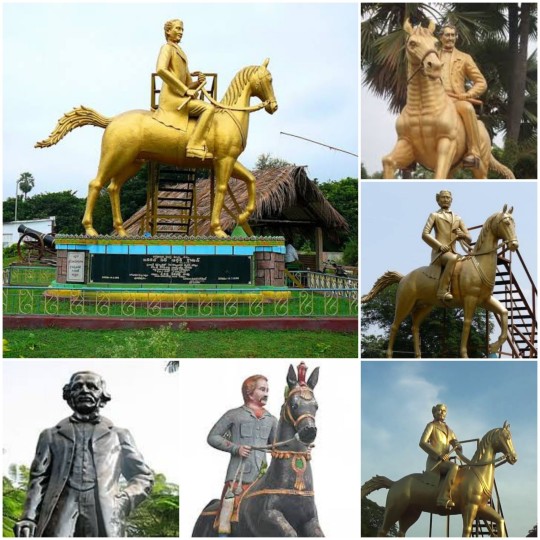
On 15th May of every year, thousands of people, mostly farmers, but a few engineers, administrators, academics and politicians too assemble round these statues, pour milk on them, do puja with proper mantras and abhishekam, to celebrate the birth anniversary of this Englishman.
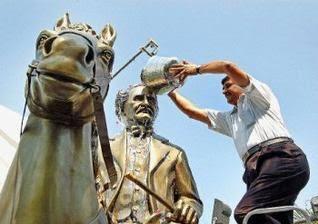
In 2009, an obscure body called the Andhra Pradesh Hindi Academy commissioned an agency to locate the tomb (final resting place) of this Englishman. The agency found the tomb in a village called Dorking, about 50 kms from London. So representatives of this body flew to Dorkings and put flowers on the tombstone to convey their respects to the man. The Telugu Association of London took up renovation of the tomb as their onus.

Now, who is this guy? And what did an Englishman, an East Indian Company official at that, do to deserve such feelings of respect and reverence amongst Indians?
Therein lies a tale.
This Englishman was Sir Arthur Cotton. He was a soldier, an engineer and an administrator with the British East India Company during the 19th century. And in 'an era of darkness' where the British fleeced Indian resources out of India and did very little for the population in return, this general worked on a dozen or so irrigation projects in South India and converted two areas into rice bowls of their respective provinces. Thanjavur became the rice bowl of present day Tamil Nadu, whereas districts surrounding Godavari and Krishna basins became the rice bowls of present day Andhra Pradesh. For the locals of these lands, he was Cotton Dora. Dora is an affectionate-cum-respectful term, meaning Master. His tombstone reads - Irrigation Cotton.

Arthur Cotton, aged 18 years, arrived in India in 1821, with the designation of Second Lieutenant and was attached to the office of the Chief Engineer of Madras presidency. It is said that he was as much an imperialist as his peers, but in 1826, he experienced a religious awakening. Thereafter, he decided that his mission was to work “for the glory of God…and the benefit of men". And he spent close to 50 years with the one idea that he believed could make a difference in India - Irrigation.
His talents for constructing irrigation structures were soon recognized by his superiors and he was entrusted with the task of constructing a dam across Cauvery river. Upon successful completion, he was promoted to the rank of Captain in 1828 and was entrusted with the work of investigation of all irrigation schemes in the presidency. His persistent efforts led to Thanjavur belt becoming the Rice bowl of Tamil Nadu.
His masterpiece is, of course, the construction of Dowleshwaram barrage across the river Godavari in Andhra Pradesh. Dowleshwaram is a village within the vicinity of Rajamundry city, where Godavari is around 4km wide. When the rains in the Western Ghats would be heavy, the Godavari would be in spate. During summer, the Godavari would dry and nearby areas would be gripped by drought.
Arthur Cotton fought tooth and nail with his administration for a barrage over the river. Getting funds and resources for developmental work was not easy. When the Godavari project was sanctioned in 1847, Arthur Cotton asked for six engineers, eight juniors and 2,000 masons. Instead, he was allotted one young hand, two surveyors, and a few odd men. Yet he persevered. He studied and copied the method of construction used by the Cholas. He succeeded in completing the magnificent project on the Godavari river at Rajamundry in 1852.
As a tribute to him, a new barrage was constructed across the Godavari river, in 1982, upstream of the old one, and was named after him. It was dedicated to the nation by the then Prime Minister of India, Indira Gandhi. He is revered in the Godavari districts for making it the rice bowl of Andhra Pradesh.

After completing the Godavari barrage, Arthur Cotton shifted his attention to the construction of the aqueduct on Krishna River. The project was sanctioned in 1851 and completed by 1855.
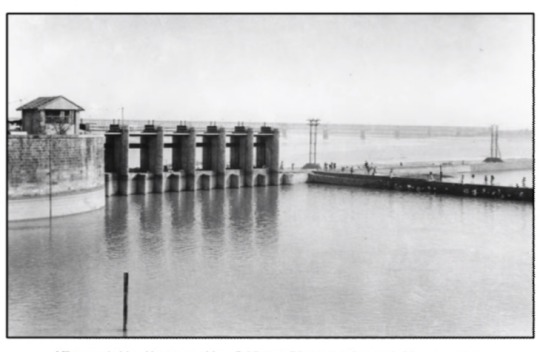
But in 1952, a massive flood breached it. So in 1954, then Chief minister of Andhra Pradesh, Tanguturi Prakasam, laid the foundation for a new barrage. The project was completed in 1957, and was inaugurated by the then Chief Minister, Neelam Sanjeeva Reddy, who named it Prakasam Barrage.

In 1858, Arthur Cotton came up with an even more ambitious proposal - connecting all major rivers of India, and interlinking of canals and rivers - the precursor to today's National Water Grid project. Imagine that! About 160 years back! Below is the gist of his proposal. Of course, he didn't get the necessary funds.

Though Arthur Cotton rose through the ranks steadily, he was hated by his superiors for his service to the Indians. He was thwarted by administrative jealousy and was called a “wild enthusiast" with “water in his head". At one point, impeachment proceedings were initiated by his superiors for his dismissal. He was also summoned to the appear before a House of Commons Committee to justify his proposal to build a barrage across the Godavari. He supposedly said, "My Lord, one day's flow in the Godavari river during high floods is equal to one whole year's flow in the Thames of London".
His biggest bone of contention was with the massive railway lobby amidst the administration. He kept on making the point that railways bled India and Indians, while irrigation gave life to Indians. Because the sole reason why the British invested in Indian railways was the efficient transfer of tradable goods to shipping ports so that wealth can be siphoned off to their British headquarters. He rued the disproportionate investments made in railways vis-a-vis irrigation.

Arthur Cotton retired from service in 1860 and left India. He was knighted in 1861.
This post is a tribute to Sir Arthur Thomas Cotton, Cotton Dora to the folks in Andhra Pradesh, Cotton Dorai, to the locals in Tamil Nadu, a rare Englishman, who worked to improve the lot of the people he conquered.
#sir arthur cotton barrage#sir arthur thomas cotton#sir arthur Cotton#cotton dora#cotton dorai#dowleshwaram barrage#prakasham barrage#rice bowl#godavari river#krishna river#thanjavur#irrigation#irrigation cotton
10 notes
·
View notes
Text
TDP Forms Godavari Water Utilization Corporation
The Telugu Desam Party (TDP) led by Nara Chandrababu Naidu has recently formed the Godavari Water Utilization Corporation, a move that has been hailed as a major achievement by the party's MLAs and supporters. The Godavari River is one of the largest rivers in India, with a total length of over 1,450 km. It originates in the Western Ghats and flows through several states before emptying into the Bay of Bengal. The river has enormous potential for irrigation, power generation, and other forms of economic development. However, the utilization of the Godavari River's resources has been a contentious issue for many years, with various political parties and interest groups staking their claims over the river's water. In this context, the formation of the Godavari Water Utilization Corporation by the TDP government is seen as a major step towards rationalizing the use of the river's resources and ensuring equitable distribution among various stakeholders.
According to TDP MLA's, the formation of the corporation is one of the Top TDP Achievements of the government. They argue that the corporation will help to resolve long standing disputes over the allocation of water resources and will promote sustainable development of the river basin. The TDP government has also made significant TDP Contributions to the development of Andhra Pradesh in other areas. For example, it has initiated several infrastructure projects, such as the construction of a new capital city, Amaravati, and the development of a new port at Dugarajapatnam. The government has also introduced several welfare schemes, such as the Amma Vodi scheme, which provides financial assistance to mothers for the education of their children. In addition to these achievements, the TDP government has been actively providing TDP Live Updates on its various initiatives and programs through social media platforms and other channels. This has helped to increase transparency and accountability in the government's functioning and has enabled citizens to stay informed about the latest developments in the state.

Overall, the formation of the Godavari Water Utilization Corporation is a significant milestone in the TDP's efforts to promote sustainable development in Andhra Pradesh. By ensuring equitable utilization of the Godavari River's resources, the TDP government has taken a major step towards resolving long standing disputes and promoting the state's economic growth. As Nara Chandrababu Naidu, the leader of the TDP, has emphasized, the government's efforts are guided by a vision of inclusive and sustainable development that benefits all sections of society. The formation of the Godavari Water Utilization Corporation is just one example of how the TDP is working towards this goal, and the party's MLAs and supporters are confident that there will be many more achievements to come in the future.
0 notes
Text
TDP Government's Godavari River Water Corp.
The Telugu Desam Party (TDP) Government in Andhra Pradesh, under the leadership of former Chief Minister Nara Chandrababu Naidu, formed the Godavari River Water Utilization Corporation (GRWUC) in 2018. This move aimed to address the issues of water scarcity and irrigation in the state, particularly in the Godavari river basin. The GRWUC was formed as a special purpose vehicle (SPV) to undertake the construction of various irrigation projects and other related infrastructure in the Godavari river basin. The corporation was also tasked with implementing the Polavaram project, which is one of the largest irrigation projects in India.

The TDP Government's move to form the GRWUC was widely appreciated by experts and stakeholders in the irrigation sector. It was seen as a positive step towards improving the state's irrigation infrastructure and boosting agricultural productivity. The TDP Government, under the leadership of Nara Chandrababu Naidu, has been credited with several other achievements in the field of irrigation and agriculture. One of the top achievements of the TDP Government was the successful implementation of the Pattiseema project, which was aimed at diverting Godavari river water to the Krishna river basin. This project helped address the water shortage in the Krishna river basin, which is a key agricultural region in Andhra Pradesh. The TDP Government also implemented several other irrigation projects, including the Handri-Neeva project, the Galeru-Nagari project, and the Veligonda project. These projects have helped boost irrigation and agricultural productivity in the state.
Apart from irrigation and agriculture, the Government has also made significant TDP Contributions in other areas such as infrastructure, healthcare, education, and welfare. The Government launched several welfare schemes for farmers, women, and marginalized communities, such as the Pasupu-Kumkuma scheme and the Amma Vodi scheme. However, despite these achievements, the TDP Government faced a tough challenge in the 2019 Assembly elections, where it was defeated by the YSR Congress Party. The YSR Congress Party, under the leadership of YS Jagan Mohan Reddy, won a decisive mandate in the elections and formed the Government in the state. Since then, the YSR Congress Party Government has launched its own welfare schemes and irrigation projects. However, some experts and stakeholders have criticized the YSR Congress Party Government for neglecting the projects initiated by the previous TDP Government, including the GRWUC. In recent times, there have been some TDP Live Updates regarding the GRWUC and other irrigation projects in the state. In December 2021, it was reported that the GRWUC had completed the construction of the Polavaram project spillway. This was seen as a major milestone in the project's implementation, which has faced several delays and cost overruns.
In conclusion, the TDP Government's formation of the Godavari River Water Utilization Corporation (GRWUC) was a significant step towards addressing the issues of water scarcity and irrigation in the state with the help of many Top TDP Leaders. Under the leadership of Nara Chandrababu Naidu, the government has made several other TDP Achievements in the field of irrigation and agriculture, which have helped boost the state's overall development. However, with the change in Government, it remains to be seen how the current administration will take forward these initiatives and address the challenges facing the irrigation sector in the state.
0 notes
Text
N. Chandrababu Naidu's Zeal for Transforming Andhra Pradesh

The State Administration of Andhra Pradesh has a unique calendar where the second day of the week is designated as Polavaram day instead of Monday. This change highlights the conviction of the Former Chief Minister, Nara Chandrababu Naidu, to prioritize the ambitious multi-purpose irrigation project that aims to interlink the Godavari and the Krishna rivers to address the water deficit in the latter’s river basin. Chandrababu Naidu, who has served as the Chief Minister of Andhra Pradesh for three terms, has not lost his zeal and determination to bring about transformation, despite being in the political wilderness for a decade.
Nara Chandrababu Naidu’s past initiatives, such as transforming the twin cities of Hyderabad and Secunderabad into a cyber-hub, also known as India’s Silicon Valley, demonstrates his ability to think outside of the box and strive for the seemingly impossible. He is working towards building the state capital, Amaravati, from scratch, with the help of TDP leaders, TDP MLAs, and entities from Singapore. He is determined to make Andhra Pradesh drought-proof through the Polavaram project. To get more info on this visit TDP’s recent news on TDPs official site.
Designating Polavaram as the first priority of the week is a signal from N. Chandrababu Naidu to his team and the rest of the state administration that the project is a top priority. Not only does it address a key development issue, but it also represents Chandrababu Naidu’s search for a “Yes, we can" moment and a daunting challenge in his career. He aims to implement the ‘Sunrise Andhra Pradesh-Vision 2029’ plan, which envisages Andhra Pradesh as one of the top three most developed states in India by 2022.
Nara Chandrababu Naidu’s association with the Bharatiya Janata Party-led National Democratic Alliance (NDA) has ensured that the federal government has designated the Polavaram project as a national project, spurring decision-making. The 40-year-old project is finally taking shape, and he is determined to see it through to completion. The project is expected to bring water to the Krishna River and also feed Visakhapatnam by 2018, with all aspects of the project being completed by 2019.
Nara Chandrababu Naidu’s admiration for the late Lee Kuan Yew, the founding father of Singapore, has led him to rope in entities from the city-state in designing and developing the new capital. Mr Chandrababu Naidu’s vision for Andhra Pradesh is to achieve sustained double-digit growth in the state’s economy, leading to a thorough structural transformation and making the state one of the best investment destinations in the world. The Polavaram project is a crucial step towards achieving this goal, and N. Chandrababu Naidu’s determination to make it a top priority shows his unwavering commitment to bringing about transformation in Andhra Pradesh.
In conclusion, Nara Chandrababu Naidu’s decision to designate Polavaram day as the second day of the week in the state administration’s calendar is a clear indication of his conviction to prioritize the project and bring about change in Andhra Pradesh. N. Chandrababu Naidu’s past initiatives and ambitious plans for the state demonstrate his determination to bring about transformation and make Andhra Pradesh one of the best investment destinations in the world.
0 notes
Text
Prospects of higher inflows into projects rise as monsoon gets active

The prospects of major reservoirs in the Krishna and Godavari Basins in the State have improved with the south-west monsoon getting active over the catchment areas in the upper and middle basins of the two rivers in Karnataka and Maharashtra and lower basins in Telangana with the support of low pressure area and the associated cyclonic circulation over the Bay of Bengal. Inflows, which have been mostly moderate, into most of the reservoirs have been fluctuating during the six-week monsoon season so far. However, they are likely to be stabilised and improved over the coming weeks with the monsoon getting active and the catchment areas getting rains. According to the Central Water Commission (CWC) officials, over 12.6 cm rain was recorded in Agumbe, the major catchment of Tungabhadra river, and over 6.5 cm in Krishna Agraharam in Jogulamba-Gadwal district during the 24-hour period till 8.30 a.m. on Sunday. Similarly, in the Godavari Basin, Khanapur recorded 13 cm rain followed by 10 cm in Burgampadu, 9 cm each in Huzurabad and Aswapuram, 8 cm each in Thimmapur, Kondapak, Kaddam, Chigurumamidi and 7 cm each in Kothagudem, Dummugudem, Bayyaram and Tekulapalle in Telangana. The engineers at Sriramsagar stated that Vishupuri project across Godavari in Nanded district (Maharashtra) was 97% full and a discharge of nearly 17,000 cusecs started on Sunday night with increasing level there and it was likely to start reaching SRSP from Monday evening. On Sunday evening, the inflows were around 4,200 cusecs. Authorities of SRSP along with local elected representatives released water to the Laxmi Canal of Sriramsagar Project (SRSP) for the kharif season on Sunday morning by operating the shutters of the regulator after performing ‘pooja’. The water release began with 300 cusecs in the morning but was reduced to 250 cusecs in the evening. Water release to A.R. Gutpa lift and Kakatiya Main Canal from SRSP has already commenced earlier this month. Release of water to the ayacut has also been started under Nizamsagar last week. Sriramsagar has received about 18.5 tmc ft water so far this season with the storage reaching 34.4 tmc ft against capacity of 90.31 tmc ft on Sunday evening. Water release to canal and lift systems based on Jurala has been going on for the last four weeks as the project has received over 31.7 tmc ft water so far this season.
Heavy discharge
Meanwhile, the authorities of Kaleshwaram Lift Irrigation Project have started discharging heavy flood of 1.02 lakh cusecs at Medigadda (Laxmi) barrage by lifting 24 gates as the inflows were nearly 81,400 cusecs with a rising trend. Source link Read the full article
0 notes
Text
Prospects of timely release of water to ayacut in TS brighten
Prospects of timely release of water to ayacut in TS brighten
The prospects of timely release of water to the ayacut under several major irrigation projects in the Krishna and Godavari basins in the State have increased with the projects in the upstream of the major river courses getting sizeable flood, particularly in Krishna and its tributaries in Karnataka.
With the instructions from the government, the irrigation authorities are planning to give water…
View On WordPress
0 notes
Text
In the unique calendar of the State Administration of Andhra Pradesh, an extraordinary day stands out - Polavaram Day, designated as the second day of the week. This distinctive marker underscores the unwavering commitment of the former Chief Minister, N. Chandrababu Naidu, to prioritize the ambitious multi-purpose irrigation project aimed at interlinking the Godavari and Krishna rivers to address water deficits in the latter's river basin. Despite a decade in political obscurity, N. Chandrababu Naidu's determination to bring about transformation remains resolute.

N. Chandrababu Naidu's track record includes groundbreaking projects such as transforming Hyderabad and Secunderabad into a cyber-hub, often referred to as India's Silicon Valley. His current endeavour involves building the state capital, Amaravati, from the ground up, with collaboration from TDP leaders, TDP MLAs, and entities from Singapore. His ultimate goal is to make Andhra Pradesh drought-resistant through the Polavaram project. For updates on this TDP project, you can visit the TDP official website. The designation of Polavaram as the top priority of the week sends a powerful signal to N. Chandrababu Naidu's team and the entire state leadership. It signifies not only the resolution to address a critical development issue but also symbolizes his pursuit of a "Yes, we can" moment and a monumental challenge in his career. He is steadfastly working towards implementing the 'Sunrise Andhra Pradesh-Vision 2029' plan, envisioning Andhra Pradesh as one of the top three most developed states in India by 2022. N. Chandrababu Naidu's association with the Bharatiya Janata Party-led National Democratic Alliance (NDA) has elevated the Polavaram project to a national endeavor, expediting decision-making. After four decades in the making, this project is finally taking shape, and N. Chandrababu Naidu is determined to see it through to completion. It is expected to supply water to the Krishna River and also benefit Visakhapatnam by 2018, with all aspects of the project anticipated to be finished by 2019.
N. Chandrababu Naidu draws inspiration from the late Lee Kuan Yew, the founder of Singapore, which has led him to collaborate with entities from the city-state in designing and developing the new capital. His vision for Andhra Pradesh is to achieve sustained double-digit economic growth, leading to a profound structural transformation and positioning the state as one of the most attractive investment destinations globally. The
Polavaram project serves as a pivotal step towards realizing this objective, and the TDP party led by N. Chandrababu Naidu's unwavering commitment to making it a top priority demonstrates his dedication to catalyzing transformation in Andhra Pradesh. Visit the TDP official website to explore the achievements of TDP.
The designation of Polavaram Day in the state's calendar as the second day of the week is a clear testament to N. Chandrababu Naidu's determination to prioritize the project and bring about a renaissance in Andhra Pradesh. His track record of pioneering projects and ambitious plans for the state underscores his commitment to ushering in transformation and positioning Andhra Pradesh as one of the most attractive investment destinations in the world. Examine the TDP website for more political news and local flash news of your district.
0 notes
Text
Prospects of timely release of water to ayacut in TS brighten
Prospects of timely release of water to ayacut in TS brighten
[ad_1]
The prospects of timely release of water to the ayacut under several major irrigation projects in the Krishna and Godavari basins in the State have increased with the projects in the upstream of the major river courses getting sizeable flood, particularly in Krishna and its tributaries in Karnataka.
With the instructions from the government, the irrigation authorities are planning to…
View On WordPress
0 notes
Text
Godavari River Water Utilization Corporation By TDP Government’s
The Godavari River, often referred to as the Ganga of the south, has been the lifeline of Andhra Pradesh for centuries. Its waters have nourished fertile lands, powered industries, and quenched the thirst of millions. Recognizing the immense potential of the Godavari, under the TDP Live Update of the Top TDP Contributions under N Chandrababu Naidu initiated the Godavari River Water Utilization Corporation to harness for the benefit of the state and its people from its resources. This article delves into the key aspects of this visionary project and its impact on the Top TDP Contributions in Andhra Pradesh. the TDP MLAs, led by Chief Minister N Chandrababu Naidu, took office in 2014 with a clear vision of promoting sustainable development and efficient resource management.
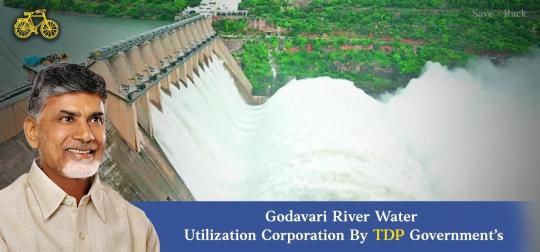
Irrigation expansion One of the primary aims was to expand irrigation facilities by diverting Godavari waters to aries and water-deficient regions, thereby increasing agriculture productivity led by N Chandrababu Naidu. The Godavari River Water Utilization Corporation, established during the TDP Government tenure, exemplified a visionary approach to resource management and development. By harnessing the potential of the Godavari River, the state of Andhra Pradesh TDP Leaders achieved significant progress in agriculture, industry, and overall quality of life for its residents. Industrial growth is the corporation intended to provide a reliable water supply to industries, which would spur economic growth, create jobs, and attract investment to the state of Andhra Pradesh under TDP MLAs. Under the TDP Political Leaders in Andhra Pradesh, the Godavari River Water Utilization Corporation initiated several ambitious projects to achieve objectives. Perhaps the most iconic project, Pattiseema aimed to lift Godavari water from the Krishna river basin, providing water to the purchased region in Krishna, Guntur, and west Godavari district. It successfully augmented irrigation, benefiting farmers and reducing dependence and groundwater. Under the Top TDP Achievements of the NCBN’s Contribution to the Polavaram project a national project with state government support aimed to provide irrigation to over seven lack acres of land, generate hydroelectric power, and control floods in the Godawari delta. It was a testament to the state’s commitment to holistic development. The Best TDP MLAs of the TDP Government proposed the Neeru-Chettu scheme, a compressive plan to provide piped drinking water to every household in the state.
The Best TDP MLAs of the TDP Government proposed the Neeru-Chettu scheme, a compressive plan to provide piped drinking water to every household in the state. The Godavari River Water Utilization Corporation, established during the Top TDP Achievements tenure, exemplified a visionary approach to resource management and development under the leadership of N Chandrababu Naidu. By harnessing the potential of the Godavari River, the state of Andhra Pradesh TDP Leaders achieved significant progress in agriculture, industry, and overall quality of life for its residents. The corporation’s legacy continues to shape the state’s future as it strives for sustainable growth and prosperity.
0 notes
Text
Get done with Kaleshwaram 3rd tmc ft work on war-footing: KCR
Get done with Kaleshwaram 3rd tmc ft work on war-footing: KCR
[ad_1]
Chief Minister K. Chandrasekhar Rao has asked the irrigation engineers to take up works pertaining to lifting of three tmcft of water from Kaleshwaram project so that it could be diverted to the needy areas during the next flood season itself.
In a marathon meeting with Ministers of districts in the Godavari Basin, officials and engineers of the Irrigation Department, that went on for…
View On WordPress
0 notes